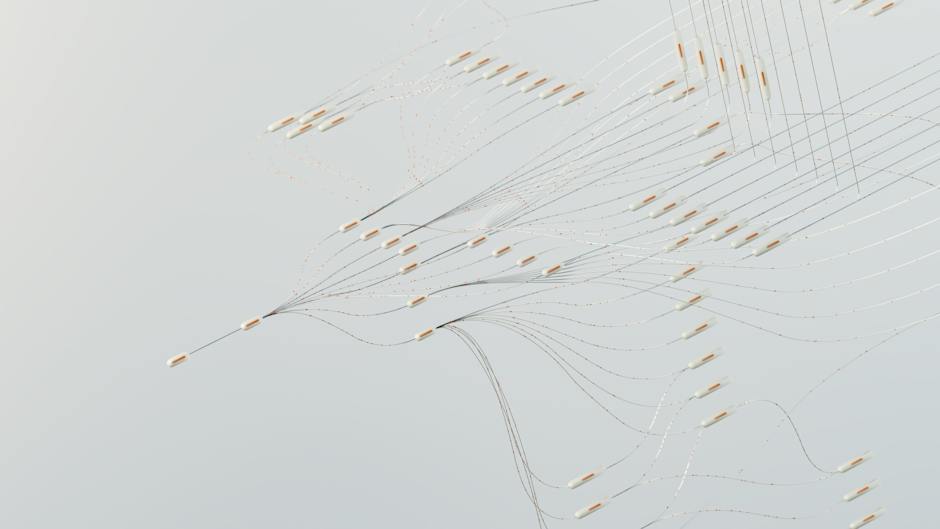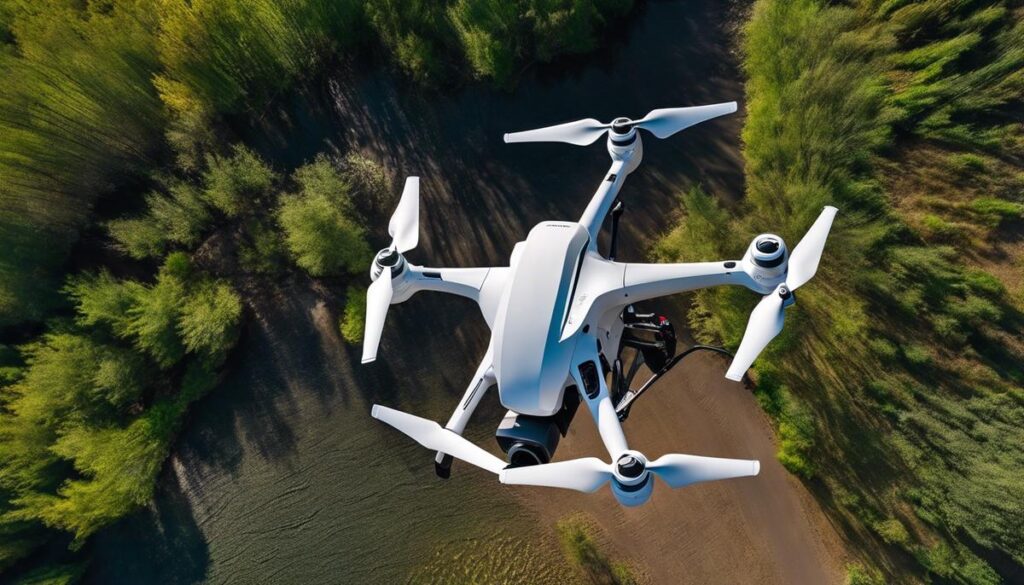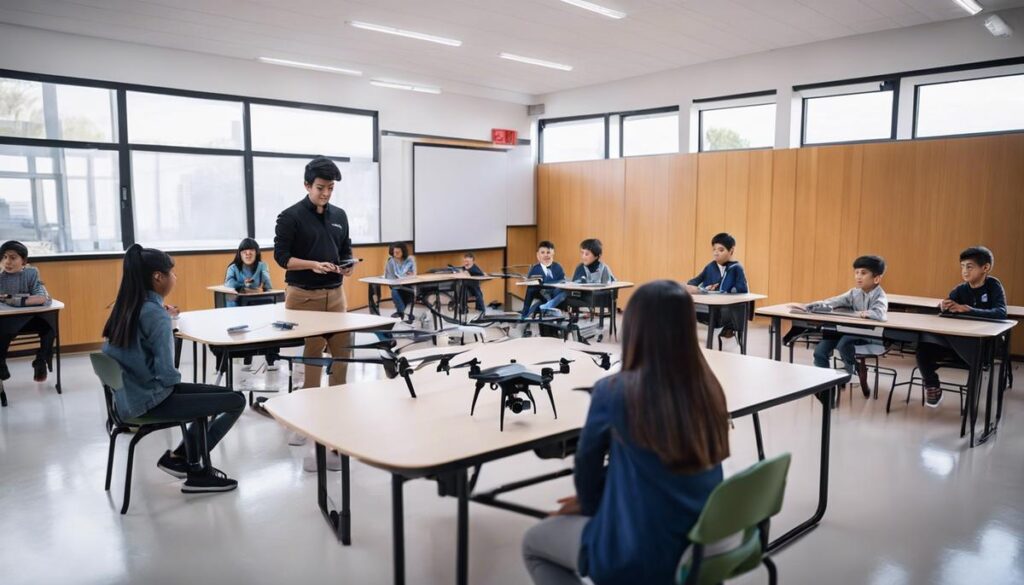The advent of drone technology has orcheastrated a paradigm shift, carving out new avenues and possibilities in numerous fields. At the heart of this drone revolution lies an intricate and advanced mechanism – Collision Avoidance. This comprehensive guide dives into the world of drone collision avoidance systems, dissecting their operation, the technology propelling them, and explaining the key role they play in enhancing efficiency and safety. Moreover, it unravels the complexities of these systems, interpreting hard to grasp scientific concepts into a format that is accessible and easy to comprehend.
Understanding Drone Collision Avoidance Systems
Technology continues to push boundaries, evolving at an unprecedented pace. This rapid advancement is no more evident than in the drone industry, where one feature stands out as a real game-changer – collision avoidance systems. Often underappreciated, these systems have become an integral part of modern drone technology. But why is it so crucial?
Flight Safety Enhancement
The risk of crashes is a perpetual concern for drone owners. Whether it’s high-speed maneuvers, navigating tight spaces, or simply overcoming operator error, crashes can turn expensive equipment into a pile of rubble in seconds. Collision avoidance systems elevate flight safety by identifying obstacles and avoiding collision in real time. This innovative feature maximizes the drone’s longevity and protects the investment made.
Increased Operational Efficiency
When a drone can autonomously and intelligently avoid obstacles, it inherently increases operational efficiency. There’s no longer the need for constant human intervention, and drones can execute longer, more complex flight paths. By reducing the need to repeatedly take manual control, operators can focus on the task at hand, be it filming, mapping, surveying, or delivering packages.
Advanced Imaging Applications
Photography and videography form a significant part of drone usage. Collision avoidance systems empower drones to capture stunning visuals in challenging environments. They can venture close to subjects without risk, enabling unique perspectives and high-quality imaging. This is a substantial benefit for industries like real estate, film, advertising, and surveying.
Facilitates Regulatory Compliance
As drone usage grows, so do regulations around strict safety standards. In many jurisdictions, having a collision avoidance system in place is not just an optional extra but a mandatory requirement. It aids in gaining permits for more challenging operations, such as Beyond Visual Line Of Sight (BVLOS) flights, vastly broadening operational capabilities.
Democratizing Professional Drone Use
Professional drone operations often require expert piloting skills to avoid crashes and mishaps. Collision avoidance systems are equalizers in this regard, opening up the field of professional drone usage to a broader audience. A novice drone operator, armed with a drone equipped with a sophisticated collision avoidance system, can effectively execute complex operations typically reserved for seasoned drone pilots.
In conclusion, collision avoidance systems are much more than a secondary component in drones. They are integral to modern drone operations, enhancing safety, efficiency, and broadening user demographics. Collision avoidance systems have thus fundamentally shifted the technological landscape, making drone usage more accessible, safer, and more effective than ever before. As the drone industry continues to evolve, these systems will undoubtedly retain their significance, shaping the future of unmanned flight.

The Mechanism Behind Collision Avoidance
Unpacking Collision Avoidance in Drones
Drone technology continues to evolve at a breathtaking pace, with collision avoidance standing as one of the most impressive advancements to date. As tech enthusiasts, it’s our delight to delve into these fascinating features that push the boundaries of innovation.
Briefly, the essence of how collision avoidance operates in drones lies in coordinating different technology systems to create a comprehensive understanding of the drone’s spatial environment. These systems work together to identify potential collision hazards and then take appropriate action to avoid them. The following components form this innovative collision avoidance mechanism:
- Sensors: Drones are typically fitted with sensors including ultrasound, LIDAR, infrared, and monocular or stereo vision-based sensors that scan the environment. These sensors act as the “eyes” of the drone, gathering data and generating an awareness of the surrounding environment.
- Image Processing: The information captured by the sensors is processed in real-time to construct a three-dimensional (3D) spatial map. This map helps in identifying obstacle locations and distances.
- Control Systems: The control system forms the “brain” of the drone, swiftly processing the data fed by the sensors. It interprets the data to make real-time decisions depending on several variables such as drone speed, flight path, and existing weather conditions.
- Automatic Response: The drone’s flight control system makes split-second decisions based on the processed information, sending navigational commands to the drone to adjust its trajectory and avoid impending collisions.
Let’s put this into perspective. Consider a drone on a pre-destined flight route and a bird suddenly crossing its flight path. The sensors immediately capture this obstacle, the control system rapidly processes the situation, and an automatic response instructs the drone to adjust its path, averting a potential collision. Once the flight path is clear, the drone resumes its original route.
The beauty of this mechanism is its seamless data flow that leads to quick responses. The process is similar to the human response to physical obstacles – think dodging a ball thrown your way. The eye (sensor) spots the ball, the brain (control system) processes the threat, and an automatic response helps you move out of the way.
As the world becomes more autonomous, collision avoidance systems in drones are indeed a marvel of technological innovation. By integrating sensors, image processing, control systems, and prompt responses, drones can effectively detect and avoid obstacles, contributing significantly to secure and efficient operations. An exciting time awaits as we anticipate further advancements in this intriguing space of technology.

Photo by rayhennessy on Unsplash
Applications of Drones with Collision Avoidance
Drones equipped with collision avoidance systems are increasingly becoming a part of our everyday lives and not just a tool for tech enthusiasts. This leap in drone technology extends far beyond the known advantages such as enhanced flight safety, increased operational efficiency, and advanced imaging applications. This article will delve further into some of the flourishing aspects and practical applications of these high-tech drones that aren’t as typically acknowledged, but have substantial real-world value.
One practical application area that we’re starting to see is the usage of these drones in disaster assessment and relief operations. The collision avoidance technology enables drones to navigate safely through disaster-stricken areas. They can avoid obstacles such as debris, buildings, or other physical barriers while efficiently collecting pertinent data. This technology dramatically enhances rapid emergency response, increases safety for rescue teams, and often affords quicker assistance to victims.
Another promising area is infrastructure inspection. Drones with collision avoidance are an ideal solution for inspecting towers, bridges, and other large structures. They can safely navigate around these structures, capturing high-resolution images for analysis, without the risk of impact. This minimizes the need for manual inspections which are often time-consuming, costly, and potentially dangerous.
Meanwhile, in agriculture, farmers are starting to utilize this tech-savvy tool. These drones can help farmers monitor their crops and livestock, detect diseases, and even apply fertilizers. With collision avoidance technology, drones can efficiently fly over fields and pastures, avoiding trees, water towers, or other on-site obstacles, therefore, increasing the efficiency and effectiveness of farm management.
Asset tracking and inventory management in large warehouses is gaining traction too. Drones equipped with collision avoidance systems can fly safely in confined spaces, scanning barcodes, and helping maintain an accurate, real-time inventory count. This reduces human error, increases efficiency, and can greatly improve the overall supply chain management process.
Another intriguing avenue is the deployment of such drones in wildlife conservation efforts. Field biologists rely on drones to monitor and track animal populations, especially those endangered or in hard-to-reach habitats. Collision avoidance systems allow the drones to seamlessly navigate dense forests, steep cliffs, or other challenging terrains, collecting valuable data with minimal disturbance to the wildlife.
In summary, the possibilities seem almost endless as we continue to explore the potentialities of drones equipped with collision avoidance systems. These cutting-edge applications are just the tip of the iceberg as businesses, innovators, and tech enthusiasts continually push the boundaries of drone technology. With the fusion of other technological advancements, such as machine learning and improved sensor technology, the future scope of collision avoidance equipped drones is truly exciting. Hold onto your propellers, the drone evolution is just starting to take off.

Future Possibilities and Challenges of Collision Avoidance in Drones
Fostering Civilian Adaptation: A Leap Forward In Drone Technology
Looking further into the world of drones powered by collision avoidance technology, it becomes clear that the greatest advancements lie not in the commercial sector, but within everyday civilian life. This technology is on its way to become an integral part of daily living, changing lifestyles and introducing new, exciting possibilities.
Imagine the daily commuter journey completely revamped, with drones taking over the burden of delivery and commuting jobs, reducing traffic on our roads. The automation capability that collision avoidance ensures will impact transportation dramatically. With this technology, drones could potentially transport goods in highly populated, urban areas without the risk of collision, bringing about a seismic shift in transportation norms.
In an era marked by a growing demand for personal space, drones fitted with collision avoidance technology could soon revolutionize the concept of personal privacy. These little robotic companions could serve as discrete personal bodyguards, monitoring surroundings and keeping potential threats at bay. They could be used to track suspicious activity in residential areas, with real-time analytics and automated response mechanisms ensuring a safe and secure environment.
In education, learning could be revolutionized by the addition of drones in classrooms or outdoor activities. Powered by their collision avoidance systems, drones could engage in interaction with students without causing harm or disruption. These autonomous flying machines could potentially facilitate hands-on training and create an immersive, engaging educational environment.
In healthcare, drones could drastically cut down response times. In situations where every second counts, being able to navigate swiftly to the patient without human pilot intervention could be lifesaving. The prevalence of this technology could even pave the way for personalized medical drone assistance for the elderly or those with mobility issues.
However, the adoption of this technology could come with its own set of challenges. Regulatory concerns on mass adoption and use of autonomous drones in private spaces could pose a daunting obstacle. Privacy infringement might become a critical issue, with potential misuse leading to surveillance or harassment issues.
Technical challenges, while maybe not as pronounced, could still persist. Perfecting the robustness of collision avoidance systems under varying conditions might not be a trivial task. Issues relating to battery life, payload capacity, and weather resistance need to be addressed in order to ensure this technology’s broad applicability.
In conclusion, collision avoidance drone technology is not just another incremental development; it could potentially reshape society and open up a world that, until recently, could only be dreamed of. However, the journey to full-scale adoption will not be without its own set of bumps along the way. World, it’s time to get set to embrace yet another technological revolution.

Photo by jeisblack on Unsplash
Drone technology and, more specifically, collision avoidance systems are poised to shape the future, offering countless opportunities and challenges. It’s exhilarating to speculate on what advancements lie ahead, including the potential technological leaps, burgeoning markets, and emerging applications that are bound to transform drone usage. Regardless, the winding path to progress will also be laden with obstacles. Privacy concerns, regulatory constraints, and technical limitations will surely act as speed bumps along the road. However, as we navigate these challenges, the possibility of a future where drones seamlessly integrate into our daily lives becomes increasingly attainable.
Originally posted 2024-01-01 02:04:45.




